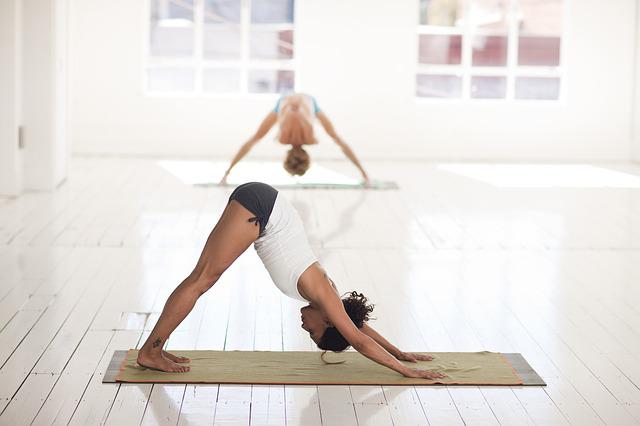People crave a means to unplug and give their thoughts a rest as modern life becomes more dependent on nonstop streams of information from our mobile gadgets, and continual stimulation becomes the norm. Meditation is one method for accomplishing this.
For our purposes, let us define meditation as being aware of your mind’s oscillations. We usually entirely identify with our own thoughts, which means there is no difference between the thoughts and the thinker. Meditation begins to deconstruct this attachment.
This article discusses what meditation is, how to begin a meditation practice, various problems you may face when meditating, and the numerous benefits that meditation provides.
There are many various types of meditation, but the three most common are:
- Concentrating on the breath: This is a Buddhist method. By focusing on your breath, you divert your attention away from any one particular thought. Some people find it helpful to count their inhalations and exhalations.
- Observing ideas: It’s a widespread fallacy that meditation requires you to rid your mind of all thoughts. In truth, thoughts will still arise, but this strategy will allow you to separate yourself from them. Assume you’re meditating and you’re thinking about a big assignment at work. Instead of clinging to this idea and following it up with others, such as “I’m concerned I won’t be able to get it on time,” you notice it, label it, and let it pass without becoming reactive.
- Body scanning: Body scanning is a technique for diverting your attention away from your thoughts and toward your body. You focus all of your concentration on one specific portion of your body and then move your attention to different regions of your body. Start at the top of your head, for example, then work your way down on your body from face to your toes.
How to Begin Your Meditation Practice
You don’t need much to begin meditating—as long as you set aside some time during your day and are eager to learn, you’ll be well on your way to developing your own distinct practice.
Establish a Time Many individuals prefer to meditate first thing in the morning, but if another time of day works better for you, do so. It’s preferable to commit the same amount of time to your practice every day; nevertheless, be understanding if you can’t meditate at the same time every day. Meditating at any time is a form of self-care.

If you regularly do yoga at home, try doing your meditation at the end of your yoga session.
If you find it difficult to focus on your breathing for 10 minutes, start with five minutes. Work on those five minutes before extending the time. When you’re ready, start increasing your sitting time by one minute at a time. Work your way up gradually.
You’ll need a timer that will alert you when your meditation session is over, so you don’t look at the clock to see how much time is left. Silence your phone, so you’re not tempted to interrupt your meditation if it rings.
If you use meditation applications, you won’t need to set a timer because most apps will keep the time.
Make the Room You must choose not only a time but also a location for your practice. It doesn’t have to be large or decorated, but it should be separate from household distractions. A bedroom or living room corner is ideal. You can start listening to meditation music (there are lots of free playlists online) right now.

Preparation You might want to take a little yoga warm-up before sitting, especially if you’re planning to meditate first thing in the morning. It’s also fine if you discover you don’t need to warm up.
Find a Position That Is Convenient Find a cushion to sit on if you can sit on the floor. You could buy a zafu, which is a type of meditation cushion, but it isn’t necessary. Try sukasana, or cross-legged pose. While you may observe others meditate in the lotus position, it is not a comfortable or safe position to remain in for extended periods of time.
Remember that it doesn’t matter what you look like when you’re meditating—as long as you’re comfortable, you can meditate effectively.
If you are unable to sit on the floor, that is also acceptable. Find a chair that allows you to sit up straight with both feet flat on the floor.
Place Your Hands You may have seen images of people meditating with their hands in various mudras. You can attempt any of the positions you’ve seen or just place your hands in your lap. Another alternative is to rest your hands on your knees, palms up or down. Find a comfortable position for yourself.
Pay Attention to Your Breathing Close your eyes and take your seat. Start observing your breath without changing it. It’s natural to desire to deepen your breathing as soon as you notice it. Resist the temptation.
Concentrate solely on your inhales and exhales, perhaps focusing on the sensation of air going in and out of your nostrils. You can listen to your breaths if it helps you focus on them. When thoughts enter your mind, visualize them floating away before returning your attention to your breathing.
Your mind might wander, as it certainly will, acknowledge it, and then let it go.
Conclude Your Practice Open your eye slowly when you are done. Take a few moments after your practice to notice how you feel. If you’re stiff after sitting, go on your hands and knees slowly. A gentle stretch (such as a downward-facing dog) can help you relax.

Potential Drawbacks
There are some frequent difficulties that people face when meditating. It’s vital to remember that everyone, no matter how long they’ve been meditating, has problems with the practice at times. It’s all part of the procedure.
Restlessness
If you get restless when you sit down to meditate, you’re not alone. You may think to yourself, “This is a waste of time,” and consider all the other “useful” things you could be doing instead. This is a common sensation experienced during meditation.
Resisting the current moment causes restlessness. Allow yourself to be restless and simply notice it. Is the sensation gone after a few minutes? Is it more durable? What about the next time you sit down to meditate? For some folks, practicing more frequently is beneficial. Because many of us are constantly doing something, learning to be in the present moment requires practice.
Sleepiness
Because sleep and meditation have comparable effects on the brain, it’s natural to want to doze off during a meditation practice—but there are strategies to avoid falling asleep. Avoid meditating in your bedroom, and avoid meditating while lying down if it’s too easy to fall asleep in that position.
You’re more likely to feel weary after eating a meal, so avoid meditating at that time. To stay awake, consider meditation music, moving meditation, or meditating with your eyes open.
Doubt
When meditating, you may question, “Am I doing this correctly?” or Is it even functional? According to research, many people avoid practicing meditation because they are skeptical of its usefulness.
According to one review of 30 studies on meditation, it can take as little as eight weeks for meditation to have tangible impacts on the brain.
These physical alterations to certain brain areas promote better emotional management and focus.
However, if you are skeptical, keep in mind that it may take some time before you notice the benefits of meditating.
Meditatioin’s Advantages
Meditation has numerous potential advantages. Meditation can help with:
- Immune system booster
- Reduce your negative ideas
- Assistance with addiction recovery
- Assistance in stopping smoking
- Improve your ability to pay attention, focus, and make decisions.
- Reduced fatigue and stress levels
- Reduce physical pain Reduce sadness and anxiety symptoms
In Conclusion
You might feel apprehensive when you first begin. However, commit to your practice for at least a few weeks. You can even keep a meditation notebook to record any small, positive changes you see, which will help urge you to continue on your meditation journey.
Remember that there are numerous tools available, including classes, books, podcasts, and articles, to assist you in determining which sort of meditation practice is ideal for you.
